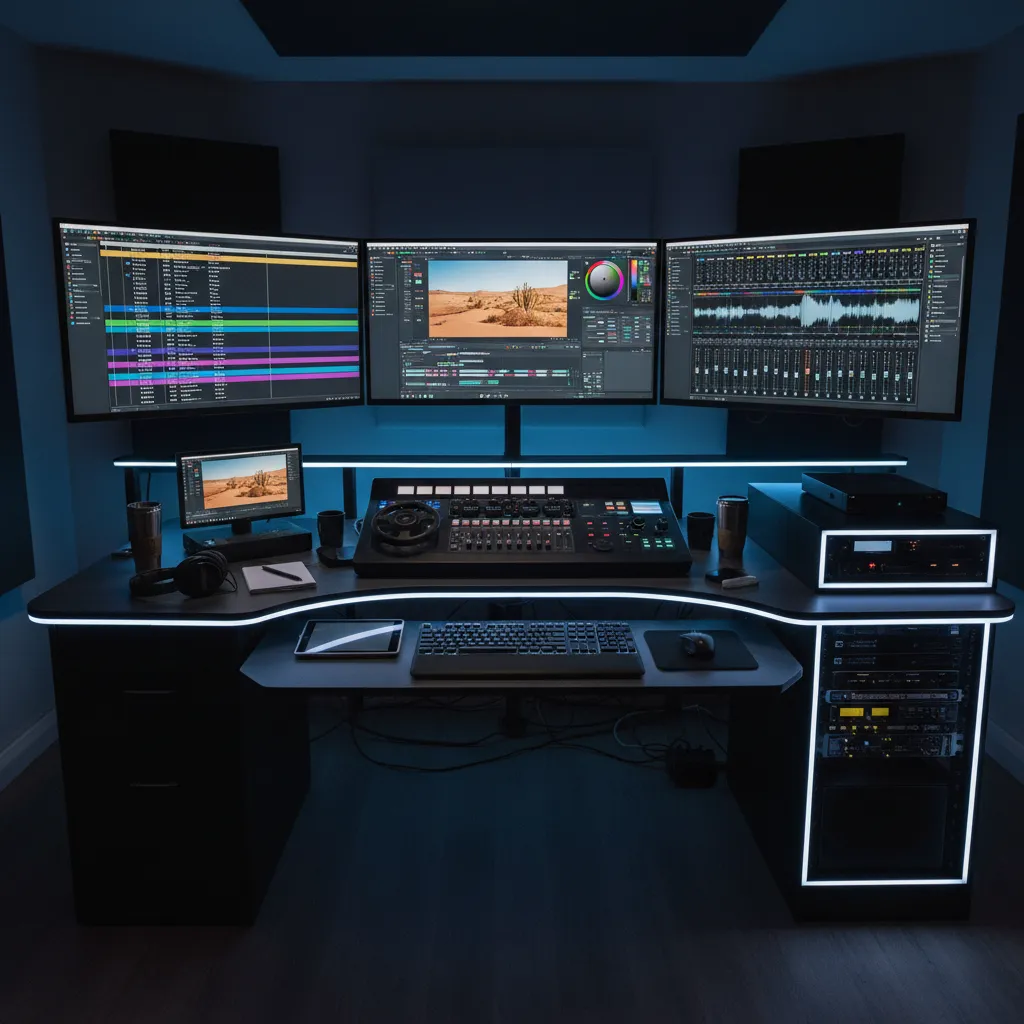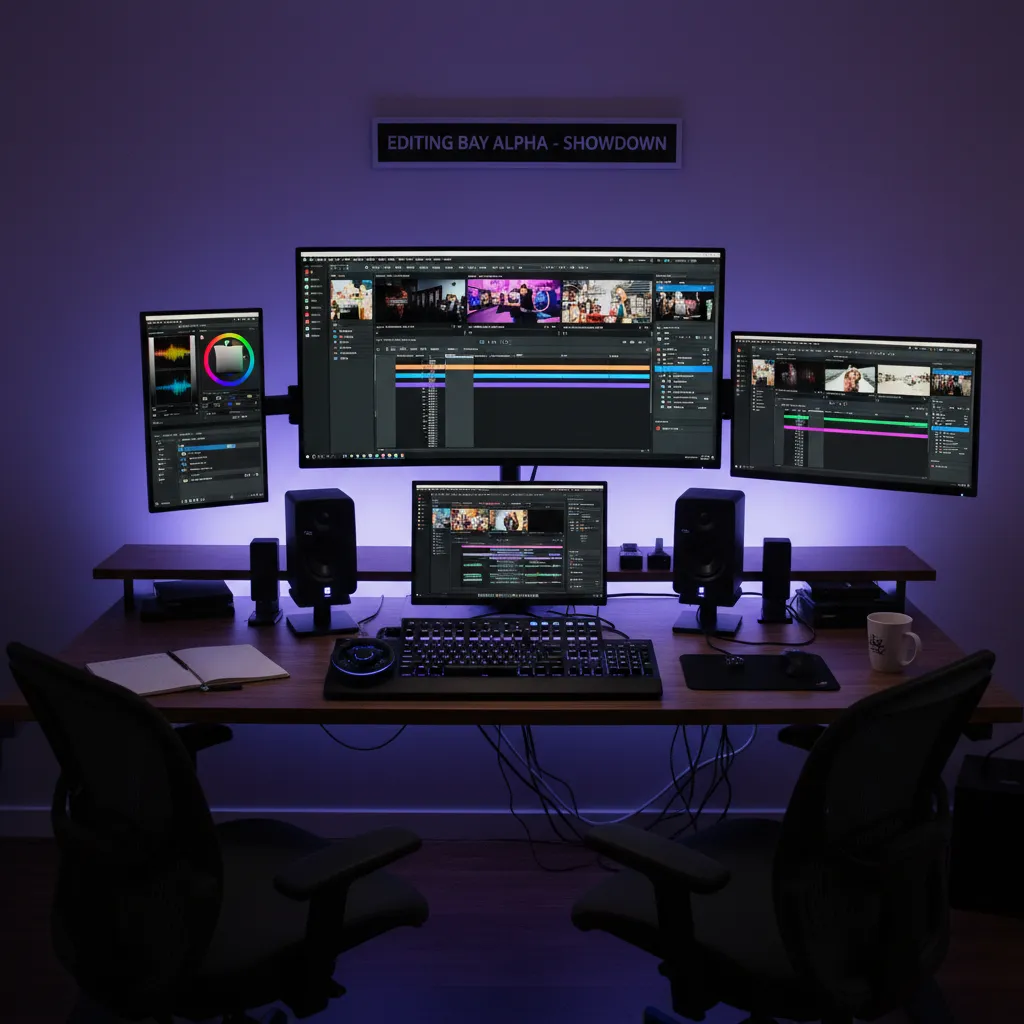
Professional Video Editing: Post-Production Workflow for Maximum Impact
Mastering Post-Production: Where Raw Footage Becomes Compelling Content
Post-production represents the crucial transformation phase where raw footage evolves into polished, professional content that resonates with audiences and drives business results. At M&M Communications, our post-production expertise has refined campaigns for brands like Shiseido, The Body Shop, and Lotte Hotel Saigon, understanding that exceptional editing isn't just about technical proficiency—it's about crafting inspirational and magical stories that connect emotionally with viewers long after they've finished watching.
Understanding Modern Post-Production Workflows
Contemporary post-production combines artistic vision with technical precision, requiring systematic approaches that maintain creative flexibility while meeting demanding delivery schedules. The modern workflow encompasses far more than basic editing—it includes color grading, audio design, motion graphics, and multi-platform optimization.
Successful post-production begins during pre-production planning, where editors collaborate with directors and producers to understand creative vision, technical requirements, and delivery specifications. This early involvement prevents costly revisions and ensures smooth transitions from production to final delivery.
Professional Video Editing Software Mastery
Adobe Premiere Pro: Industry Standard Excellence
Premiere Pro remains the gold standard for professional video editing, offering robust timeline editing, seamless integration with Creative Cloud applications, and extensive third-party plugin support. Its multi-format support and proxy workflows enable efficient editing regardless of source footage specifications.
Master Premiere Pro's advanced features: multicam editing for complex productions, nested sequences for organized project management, and dynamic linking with After Effects for motion graphics integration. Understanding keyboard shortcuts and customizable workspaces dramatically improves editing efficiency.
Final Cut Pro: Mac-Optimized Performance
Final Cut Pro X leverages Mac hardware optimization for exceptional performance, particularly with 4K and higher resolution footage. Its magnetic timeline and background rendering capabilities enable smooth editing experiences even on demanding projects.
Key Final Cut advantages include superior color grading tools, built-in motion graphics capabilities, and seamless integration with macOS. However, consider compatibility requirements when collaborating with clients or team members using different platforms.
DaVinci Resolve: Color Grading Powerhouse
DaVinci Resolve combines professional editing capabilities with industry-leading color grading tools, offering comprehensive post-production solutions in a single application. Its free version provides remarkable functionality, making professional-grade tools accessible for budget-conscious productions.
Resolve excels at color correction and grading, audio post-production, and collaborative workflows. Its node-based color grading approach offers precise control over image manipulation, essential for high-end commercial productions.
Advanced Color Grading Techniques
Color Correction vs. Color Grading
Color correction addresses technical issues—exposure problems, white balance inconsistencies, and footage matching between different cameras. This foundational step ensures consistent, natural-looking images before creative grading begins.
Color grading applies creative looks that enhance mood, atmosphere, and visual storytelling. Effective grading supports narrative objectives while maintaining natural skin tones and believable environments. Avoid over-stylized looks that distract from content unless specifically required for creative purposes.
LUT Applications and Custom Grade Development
Look-Up Tables (LUTs) provide starting points for color grades, offering consistent looks across multiple shots or projects. Develop custom LUTs that reflect brand aesthetics, ensuring visual consistency across all video content.
Professional grading workflows typically begin with technical corrections, apply base LUTs for initial looks, then refine grades shot-by-shot. This systematic approach ensures consistency while allowing creative flexibility for specific scenes or moments.
Scopes and Technical Monitoring
Professional color grading relies on technical scopes—waveforms, vectorscopes, and histograms—rather than subjective monitor viewing alone. These tools ensure broadcast compliance and consistent results across different viewing environments.
Calibrated monitors become essential for accurate color work. Investment in proper monitoring equipment prevents costly revisions and ensures consistent results regardless of final viewing platforms.
Professional Audio Post-Production
Multi-Track Audio Mixing
Professional audio mixing balances dialogue, music, sound effects, and ambient audio to create immersive soundscapes that support visual storytelling. Proper level management ensures clear dialogue while maintaining dynamic range and emotional impact.
Use separate tracks for different audio elements, enabling independent level control and processing. Apply compression, EQ, and noise reduction judiciously to enhance clarity without introducing artificial artifacts.
Sound Design and Audio Enhancement
Sound design adds layers of audio that enhance visual storytelling—ambient textures, transitional effects, and emphasis sounds that guide viewer attention and emotional response. Subtle sound design often proves more effective than obvious effects.
Professional audio enhancement includes noise reduction, dialogue cleanup, and dynamic range optimization. These technical improvements dramatically impact perceived production quality and viewer engagement.
Music Integration and Licensing
Music selection profoundly affects video impact and brand perception. Choose music that complements rather than competes with narrative content, ensuring appropriate emotional resonance without overwhelming dialogue or important audio elements.
Understand music licensing requirements for different distribution channels. Stock music libraries, custom compositions, and licensed tracks each have specific usage rights and cost structures that affect project budgets and distribution options.
Motion Graphics and Visual Effects Integration
Lower Thirds and Title Design
Professional lower thirds and titles enhance information delivery while reinforcing brand identity. Design elements should feel integrated with overall visual aesthetics rather than appearing as afterthoughts or distracting overlays.
Maintain consistent typography, animation styles, and positioning across all graphic elements. Create template systems that ensure consistency while allowing customization for specific projects or clients.
Seamless VFX Integration
Visual effects should enhance storytelling without drawing attention to themselves unless specifically designed as showcase elements. Successful VFX integration requires careful attention to lighting, color matching, and realistic motion characteristics.
Plan VFX requirements during pre-production to ensure proper shooting techniques and adequate source material. Simple effects executed well often prove more effective than complex effects that appear obviously artificial.
Multi-Platform Export and Delivery
Platform-Specific Optimization
Different platforms require specific technical specifications for optimal performance. YouTube prefers 1080p H.264 uploads, Instagram demands square and vertical formats, while broadcast television has strict technical standards for color space and audio levels.
Develop export templates for common delivery requirements, ensuring consistent quality while streamlining workflow efficiency. Test exports on target platforms to verify optimal performance and visual quality.
File Management and Archive Systems
Professional post-production generates enormous amounts of data requiring systematic organization and backup strategies. Implement naming conventions, folder structures, and archive systems that enable easy project retrieval and asset management.
Consider long-term storage solutions that balance accessibility with cost-effectiveness. Cloud storage enables collaborative workflows but requires reliable internet connectivity and ongoing subscription costs.
Collaborative Workflow Management
Client Review and Approval Processes
Establish clear review processes that facilitate efficient feedback while preventing endless revision cycles. Use professional review platforms that enable time-coded comments, version control, and stakeholder communication.
Educate clients about revision limitations and additional costs for significant changes after approval milestones. Clear communication prevents misunderstandings and maintains project profitability.
Team Collaboration Tools
Modern post-production often involves multiple team members working on different project aspects. Utilize collaborative tools that enable simultaneous work on projects while maintaining version control and preventing conflicts.
Cloud-based editing solutions enable remote collaboration but require robust internet infrastructure and careful project management to prevent technical issues and workflow disruptions.
Quality Control and Technical Standards
Professional QC Protocols
Implement systematic quality control processes that check technical specifications, audio levels, color accuracy, and visual consistency before final delivery. Professional QC prevents costly revisions and maintains client confidence in production capabilities.
Create detailed QC checklists covering all technical and creative requirements specific to project deliverables and distribution channels. Regular QC protocols become particularly important for high-volume production workflows.
Backup and Recovery Systems
Professional post-production requires redundant backup systems protecting against data loss during all project phases. Implement automatic backup solutions that don't interfere with editing performance while ensuring comprehensive data protection.
Test recovery procedures regularly to ensure backup systems function properly when needed. Data loss can destroy client relationships and project profitability more quickly than any other technical failure.
Advanced Post-Production Techniques
Multi-Camera Editing Workflows
Multi-camera productions require specialized editing techniques that synchronize multiple video and audio sources while maintaining continuity and pacing. Master multicam workflows in your chosen editing software to handle complex productions efficiently.
Plan multicam setups during production to simplify post-production synchronization. Consistent frame rates, synchronized timecode, and reference audio dramatically reduce editing complexity and improve final results.
HDR and Advanced Color Workflows
High Dynamic Range (HDR) video provides expanded color gamuts and brightness ranges that enhance visual impact but require specialized workflows and monitoring equipment. Understand HDR requirements before committing to these advanced production standards.
HDR workflows require careful planning from capture through delivery, including appropriate camera settings, calibrated monitors, and compatible export specifications for target platforms.
Measuring Post-Production Success
Efficiency Metrics and Workflow Optimization
Track editing time, revision cycles, and client satisfaction metrics to identify workflow improvements and optimize production efficiency. Systematic measurement enables data-driven decisions about equipment investments and process improvements.
Creative Impact Assessment
Evaluate how post-production choices affect final video performance through engagement metrics, brand perception surveys, and business impact measurements. This feedback informs future creative decisions and client recommendations.
Future Trends in Post-Production
AI-Assisted Editing
Artificial intelligence tools increasingly automate routine editing tasks—rough cuts, color matching, and audio synchronization—enabling editors to focus on creative storytelling rather than technical processing.
Real-Time Collaboration
Cloud-based editing platforms enable real-time collaboration across geographic boundaries, transforming post-production from isolated activities into collaborative creative processes.
Conclusion: Transforming Vision into Reality
Professional post-production transforms raw footage into compelling content that drives business results and creates lasting emotional connections with audiences. Success requires technical expertise, creative vision, and systematic workflows that maintain quality while meeting demanding schedules and budgets.
At M&M Communications, we understand that exceptional post-production isn't just about technical perfection—it's about crafting inspirational and magical stories that resonate deeply with viewers and support our clients' business objectives. Through strategic planning, technical excellence, and creative storytelling, post-production becomes the crucial bridge between production vision and audience impact.
The future belongs to post-production professionals who combine technical mastery with authentic storytelling capabilities. Invest in developing comprehensive post-production skills today, and discover how this critical phase can transform ordinary footage into extraordinary content that drives real business results.

